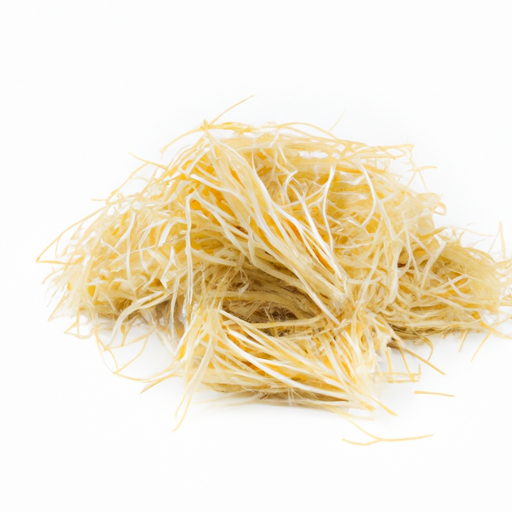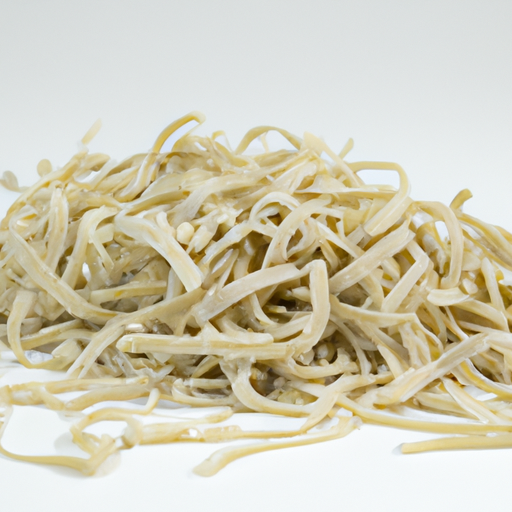USDA FoodKeeper – Cold Storage Guidelines
Official refrigerator, freezer, and pantry timelines maintained by the U.S. Department of Agriculture.
Visit USDA FoodKeeperVersatile and beloved, pasta is a pantry staple that can transform a simple meal into something delightful and comforting. With a shelf life of up to 365 days, it’s important to store it properly to maintain its flavor and texture, though it’s best to enjoy it before the expiration date for optimal taste.
Pasta may remain safe to consume after its expiration date if it has been stored correctly at the proper temperature and shows no signs of spoilage. However, risk increases over time, especially if storage conditions were not optimal.


Pantry
Room temperature
Sealed container
Dry foods stay fresher when protected from moisture, pests, and air exposure. airtight pantry containers (Amazon) help maintain quality and extend shelf life for pantry staples.
365 days
Mold, off smell
Excess humidity can cause dry foods to clump or spoil. Adding food-safe desiccant packs (Amazon) to storage containers helps control moisture levels and extend shelf life.
Salads, casseroles
Rice, quinoa
Sure thing! So, expiration dates and best quality dates for pasta are slightly different. The expiration date is more about safety. It's the date until which the pasta is may be safe if properly stored to eat when stored properly. Once the expiration date has passed, the pasta may not be at its best quality, and it's generally recommended to toss it. On the other hand, the best quality date refers to the time at which the pasta is expected to be at its peak quality in terms of flavor, texture, and aroma. Past this date, the pasta may still be safe to eat but might not taste as good. For example, if you have a box of spaghetti that has passed its expiration date but looks and smells fine, it's probably safe to eat, but it might not taste as good as it would have before. Personally, I tend to follow the expiration date for pasta for safety reasons, but if it's just a bit past the best quality date, I may still use it if it looks okay.
To determine if pasta has gone bad, check for any signs of mold, discoloration, or an off smell. Fresh pasta should have a uniform color and a pleasant, neutral smell. If the pasta feels slimy, sticky, or has a strange odor, it is best to discard it.
Sure thing! When it comes to pasta, it's not just about making it tasty, but also about ensuring it's safe to eat. One big risk with pasta dishes is leaving them out at room temperature for too long, as this can lead to bacteria growth and potential food poisoning. If pasta is left out for more than 2 hours, harmful bacteria like Staphylococcus aureus or Salmonella can multiply quickly. Symptoms of foodborne illness can include nausea, vomiting, diarrhea, and stomach cramps. It's never fun dealing with a bout of food poisoning! To keep your pasta dishes safe to eat, make sure to store them in the fridge promptly after serving and reheat them thoroughly before consuming. Also, be mindful of cross-contamination by using separate utensils and cutting boards for raw ingredients and cooked pasta. I once had a bad experience with leftover pasta salad that was left out during a picnic, and let's just say I learned my lesson the hard way! Stay safe and enjoy your pasta dishes without any worries.
Hey there pasta lover! Let's talk about keeping your pasta fresh and organized. Firstly, store your dried pasta in airtight containers or resealable bags to prevent moisture from getting in and making it soggy. To avoid a pasta avalanche in your pantry, use clear containers or mason jars to store different pasta shapes - not only does it look neat, but you can easily see what you have on hand. Pro tip: If you often cook different types of pasta, label the containers to quickly grab what you need for that perfect spaghetti carbonara or creamy fettuccine alfredo. For open boxes of pasta, transfer any leftovers to airtight bags or containers to keep them from going stale. And if you have various types of pasta nearing their expiry date, create a "pasta night" where you use up all those odds and ends in a delicious pasta medley. I love organizing my pantry this way, and it saves me time and money by knowing exactly what pasta I have available. Happy pasta organizing!
Hey there pasta lover! Did you know that pasta has been around for centuries? It’s believed to have originated in China as early as 5000 BC and made its way to Italy around the 13th century. One fun fact about pasta is that there are over 600 shapes and varieties of pasta worldwide! Each one serves a unique purpose, like how rigatoni is great for holding onto thick sauces, while angel hair pasta is perfect for lighter, oil-based sauces. In Italy, pasta isn’t just a dish – it’s a way of life! Italians take their pasta very seriously, with specific shapes and sauces being paired together to create the perfect harmony of flavors and textures. For example, spaghetti alla carbonara is traditionally made with guanciale (cured pork cheek), eggs, Pecorino Romano cheese, and black pepper – a simple yet delicious combination. So, the next time you twirl your fork around a plate of pasta, remember the rich history and cultural significance behind this beloved dish. Buon appetito!
If Pasta has been left at room temperature for more than 2 hours, it's best to discard it to prevent the risk of bacterial contamination. Bacteria can multiply rapidly in pasta at room temperature, leading to foodborne illnesses. Always refrigerate leftover pasta promptly to maintain its safety.
Leftover cooked Pasta can be safely consumed within 3-5 days if stored in an airtight container in the refrigerator. Make sure to reheat it thoroughly before eating. If there are any signs of spoilage such as an off smell or mold, it's best to discard it.
The type of container can impact Pasta's shelf life. Opt for airtight containers to store pasta, as they help prevent moisture loss and protect against contaminants. Avoid storing pasta in metal containers for extended periods, as acidic sauces can react with the metal over time, affecting the taste and quality of the pasta.
Still not sure if it's safe?
Our Food Expiration & Storage Quick Guide helps you decide quickly — with clear keep-or-discard rules for the most common foods.
Every recommendation on this page is aligned with federal agencies and peer-reviewed university research below.
Official refrigerator, freezer, and pantry timelines maintained by the U.S. Department of Agriculture.
Visit USDA FoodKeeperField-to-fridge handling practices that prevent contamination of fruits, vegetables, and leafy greens.
Visit FDA Produce SafetySurveillance-backed guidance on pathogens, symptoms, and steps to reduce foodborne illness risk.
Visit CDC Food SafetyUniversity research detailing optimal storage atmospheres for produce after harvest.
Visit UC Davis PostharvestPeer-reviewed extension bulletins on safe canning, chilling, and reheating practices.
Visit Penn State ExtensionNeed deeper reading? Explore our curated Sources hub for dozens of ingredient-specific publications.
Reviewed by the Can I Eat Expired Editorial Team, using food safety guidance from the USDA, FDA, CDC, and university extension programs.
Cooking Ingredients
View expiration date and storage guide →
Baking Supplies
View expiration date and storage guide →
Instant Foods
View expiration date and storage guide →
Condiments & Spices
View expiration date and storage guide →
Fruits & Vegetables
View expiration date and storage guide →
Condiments & Spices
View expiration date and storage guide →
Sauces and Marinades
View expiration date and storage guide →
Beverages
View expiration date and storage guide →
Condiments & Spices
View expiration date and storage guide →
Important: These are general guidelines based on authoritative sources listed above. Always use your best judgment and when in doubt, throw it out. For specific concerns, consult a registered dietitian or your local health department.
Disclosure: As an Amazon Associate, we earn from qualifying purchases. This helps support our site and allows us to continue providing free food safety information.